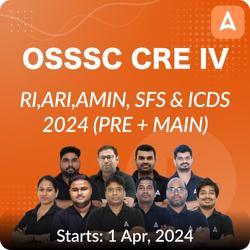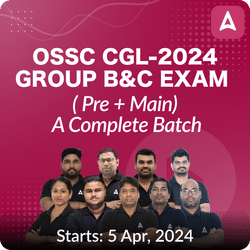Preparing for the SSB TGT Science exam can be a daunting task, especially when it comes to subjects like Botany. To help you ace your exam with confidence, we’ve compiled a list of the top 30 Multiple Choice Questions (MCQs) in Botany. These questions cover a wide range of topics within Botany and are designed to test your understanding of key concepts. So, let’s dive in!
Top 30 Botany MCQs for SSB TGT Science
- How many hydrogen bonds are there between thymine and adenine?
A. 4
B. 3
C. 2
D. 7
Answer: C - What are the eyes on potato tubers?
A. Scars
B. Sutures
C. Rootlets
D. Nodes with buds
Answer: D - In meiosis, what is the stage where pairing of homologous chromosomes begins?
A. Diplotene
B. Pachytene
C. Leptotene
D. Zygotene
Answer: D - Which of the following is fungus excluding mycelium?
A. Saccharomyces
B. Mucor
C. Puccinia
D. Rhizopus
Answer: A - Where is a gene located on a chromosome?
A. Site
B. Locus
C. Allele
D. Trait
Answer: B - Which organelles are involved in photorespiration?
A. Chloroplast, peroxisome, and glyoxysomes
B. Glyoxysomes, chloroplast, and mitochondria
C. Chloroplast, mitochondria, and peroxisome
D. Mitochondria, peroxisome, and glyoxysomes
Answer: C - What is the ratio of F2 generation in a dihybrid cross?
A. 1:2:1
B. 1:1
C. 9:3:3:1
D. 3:1
Answer: C - Where is Floridean starch found?
A. Phaeophyceae
B. Rhodophyceae
C. Chlorophyceae
D. Myxophyceae
Answer: B - What is the phenomenon called when a single gene has multiple effects?
A. Pleiotropy
B. Genostasis
C. Codominance
D. Epistasis
Answer: A - What is the hormone that reduces transpiration rate by inducing stomatal closure?
A. Cytokipin
B. Auxin
C. ABA
D. Ethylene
Answer: C - When was Lamarck’s theory of evolution published?
A. 1806
B. 1802
C. 1812
D. 1809
Answer: D - What is the female sex organ in bryophytes known as?
A. Antheridium
B. Archegonium
C. Ascogonium
D. Carpogonium
Answer: B - What is the equivalent ATP yield from NADH produced in the Krebs cycle?
A. 7 ATP
B. 5 ATP
C. 3 ATP
D. 9 ATP
Answer: C - What constitutes a nucleoside?
A. Pyrimidine + purine + phosphate
B. Purine + sugar + phosphate
C. Purine/pyrimidine + phosphate
D. Purine/pyrimidine + sugar
Answer: D - What serves as the final electron acceptor in mitochondrial electron transport chains?
A. NAD+
B. FAD
C. H2O
D. None of these
Answer: C - Which plant includes feather stigma?
A. Wheat
B. Poppy
C. Pea
D. Hibiscus
Answer: A - How does water move from cell to cell through plasmodesmata?
A. Facilitated
B. Apoplastic
C. Transmembrane
D. Symplastic
Answer: B - What is the process of water exudation through hydathodes called?
A. Evaporation
B. Bleeding
C. Guttation
D. Transpiration
Answer: C - What is the CO2 fixation mechanism in maize plants known as?
A. CAM pathway
B. C3 – C4 intermediate
C. C3 pathway
D. C4 pathway
Answer: D - In which plant family is basal placentation found?
A. Fabaceae
B. Asteraceae
C. Malvaceae
D. Solanaceae
Answer: B - What are salt-loving plants called?
A. Xerophytes
B. Mesophytes
C. Glycophytes
D. Halophytes
Answer: D - Where do insectivorous plants typically grow?
A. Carbohydrate-rich soil
B. Potassium-deficient soil
C. Nitrogen-deficient soil
D. Nitrogen-rich soil
Answer: C - What is the method of water exudation through hydathodes called?
A. Guttation
B. Transpiration
C. Evaporation
D. Bleeding
Answer: A - Basal placentation is found in which family?
A. Malvaceae
B. Solanaceae
C. Fabaceae
D. Asteraceae
Answer: D - Insectivorous plants grow best in which type of soil?
A. Nitrogen-rich soil
B. Nitrogen-deficient soil
C. Potassium-deficient soil
D. Carbohydrate-rich soil
Answer: B - In a pond ecosystem, what does “benthos” refer to?
A. Zooplanktons on water surface
B. Large fishes eating small ones
C. Primary consumers at the bottom of a pond
D. All phytoplankton
Answer: C - What do eyes on potato tubers signify?
A. Rootlets
B. Nodes with buds
C. Scars
D. Sutures
Answer: B - What is a fungus without mycelium known as?
A. Puccinia
B. Rhizopus
C. Saccharomyces
D. Mucor
Answer: C - In photorespiration, which organelles are involved?
A. Glyoxysomes, chloroplast, and mitochondria
B. Chloroplast, peroxisome, and glythisome
C. Mitochondria, peroxisome, and glyoxysomes
D. Chloroplast, mitochondria, and peroxisome
Answer: D - X174 has what type of DNA?
A. Single-stranded DNA
B. Single-stranded RNA
C. Double-stranded RNA
D. Double-stranded DNA
Answer: A





